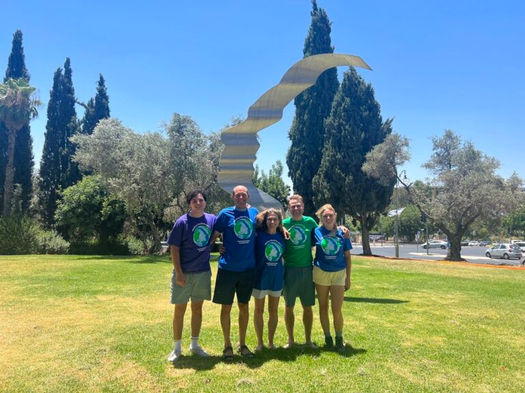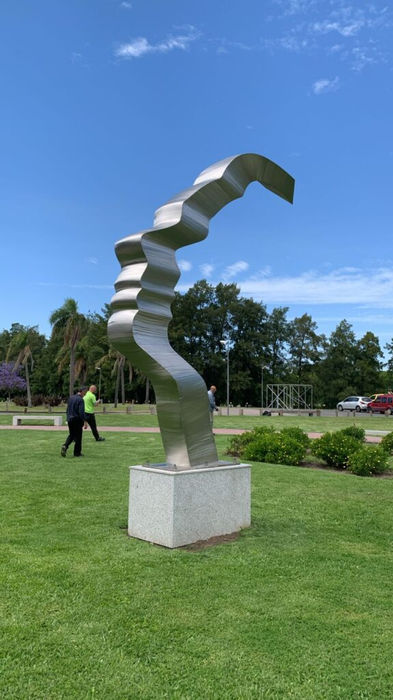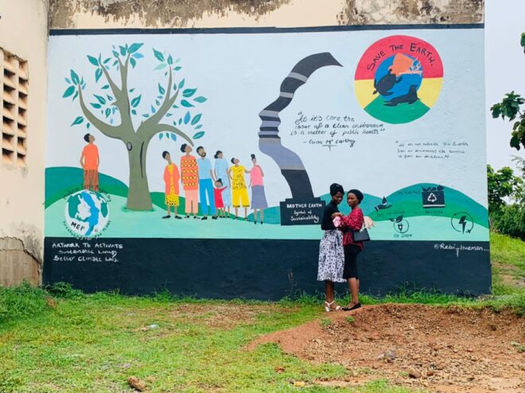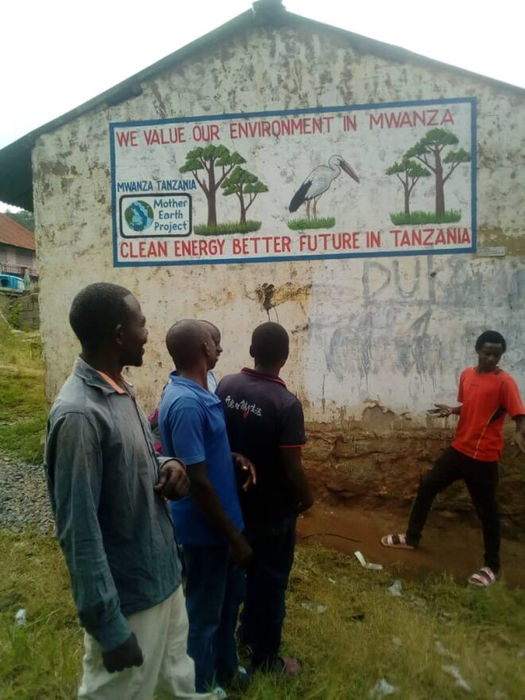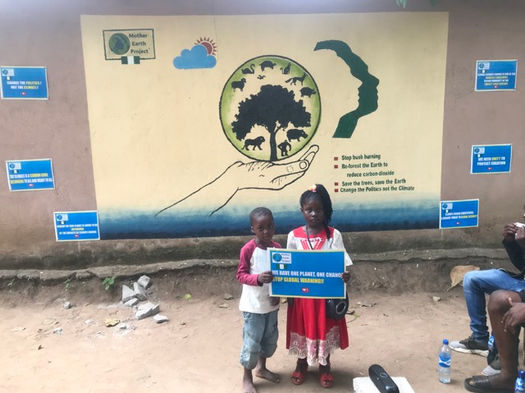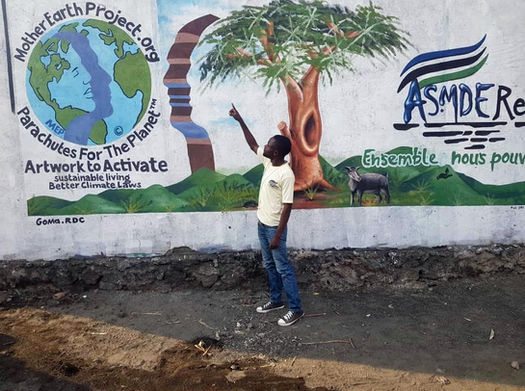

Mother Earth
Project
The Mother Earth Project, initiated by scientist and public artist Barton Rubenstein and his family in 2015, harnesses the transformative power of art to foster global sustainability awareness. The project features the Mother Earth Sculpture, a symbol of environmental stewardship and unity, installed worldwide, including Washington, DC; Yaoundé, Cameroon; Jerusalem, Israel; Bonn, Germany; Jaipur, India; Buenos Aires, Argentina; Hamilton, New Zealand; and Guilin, China — spanning eight countries and five continents.


This initiative exemplifies how public art can act as a catalyst for communal and global change, inviting people across different continents to engage with the ideals of environmental care and cultural respect. The Mother Earth sculpture not only decorates public spaces but also serves as a poignant reminder of our collective responsibility to the planet and each other. For more details, visit MotherEarthProject.org and follow @MotherEarthProject on social media platforms.


Mother Earth Sculptures Face Collective Oceans

Mother Earth is a sculpture designed by scientist and public artist Barton Rubenstein, who, with his family, initiated the Mother Earth Project in 2015. This sculpture, resembling a silver ribbon of energy rising from the earth, forms the image of a human in profile, symbolizing the symbiotic relationship between the earth and humanity. The sculpture features two faces: one in the positive space, tangible and physical, and the other in the negative space, formed by the viewer's imagination. This duality represents the yin and yang of human essence. The sculpture’s slightly upward pose and multi-faceted three-dimensional structure convey an ethereal presence, projecting a vision of hope and universality. Its stainless steel material signifies neutrality, indicating neither race nor nationality.
Mother Earth sculptures are strategically placed near water sources such as rivers or lakes, facing downstream toward the collective oceans, symbolizing a connection among all nations. This placement strengthens our collective awareness and sense of solidarity, underscoring humanity's interconnectedness.
This sculpture, embodying the universal human profile, was inspired by a profound connection between humanity and the earth. Designed from stainless steel to transcend racial and national identities, it represents a vision of inclusivity and shared global responsibility. Rubenstein chose his late mother, a former curator and art historian at the Smithsonian Institution, as the sculpture’s subject, adding a personal dimension to its universal message.


Originally conceived for the Smithsonian Institution’s National Portrait Gallery, the sculpture was intended to honor the unsung female heroes of the United States—particularly mothers and grandmothers whose contributions have shaped the nation. Although the project's direction shifted when the Gallery's Director Kim Sajet decided to focus on the Portrait of a Nation Award, the idea of globalizing the sculpture’s presence emerged from a conversation with Rubenstein's then 12-year-old son, Ari, leading to the creation of the Mother Earth Project.
Mother Earth Murals
Communities around the globe are creating MOTHER EARTH MURALS, permanent large-scale paintings displayed on walls and in various public spaces. These murals serve as powerful visual reminders of the climate emergency, educating pedestrians and motorists about pressing environmental issues specific to their communities. With 89 murals currently spanning 18 countries, this impactful project continues to expand, fostering global awareness and action towards climate change. For more information, visit Mother Earth Murals.
Parachutes For The Planet
To raise awareness about the climate emergency, the Mother Earth Project encourages individuals, schools, and communities worldwide to create PARACHUTES FOR THE PLANET®. This initiative involves distributing parachutes globally, which are then decorated with artwork and messages expressing concerns about climate change and advocating for sustainable actions. These parachutes are prominently displayed, marched with, and presented to local politicians to demand stronger climate legislation. Currently, over 4,000 parachutes have been created across more than 80 countries and 45 U.S. states.
“Parachutes serve as the global visual language for expressing concerns about climate change. They are a metaphor for bringing the planet back to a safe place. They bridge communities and organizations with a common goal, to demand better climate laws.”
-Barton Rubenstein




